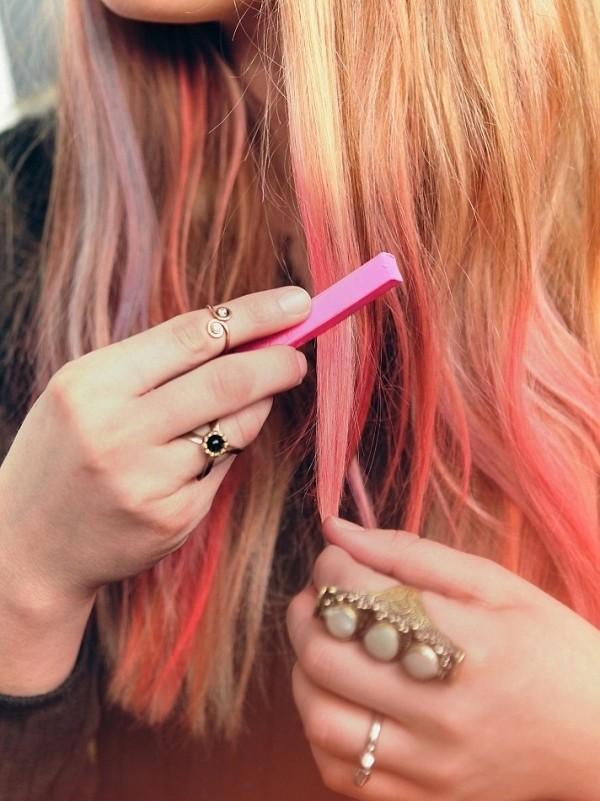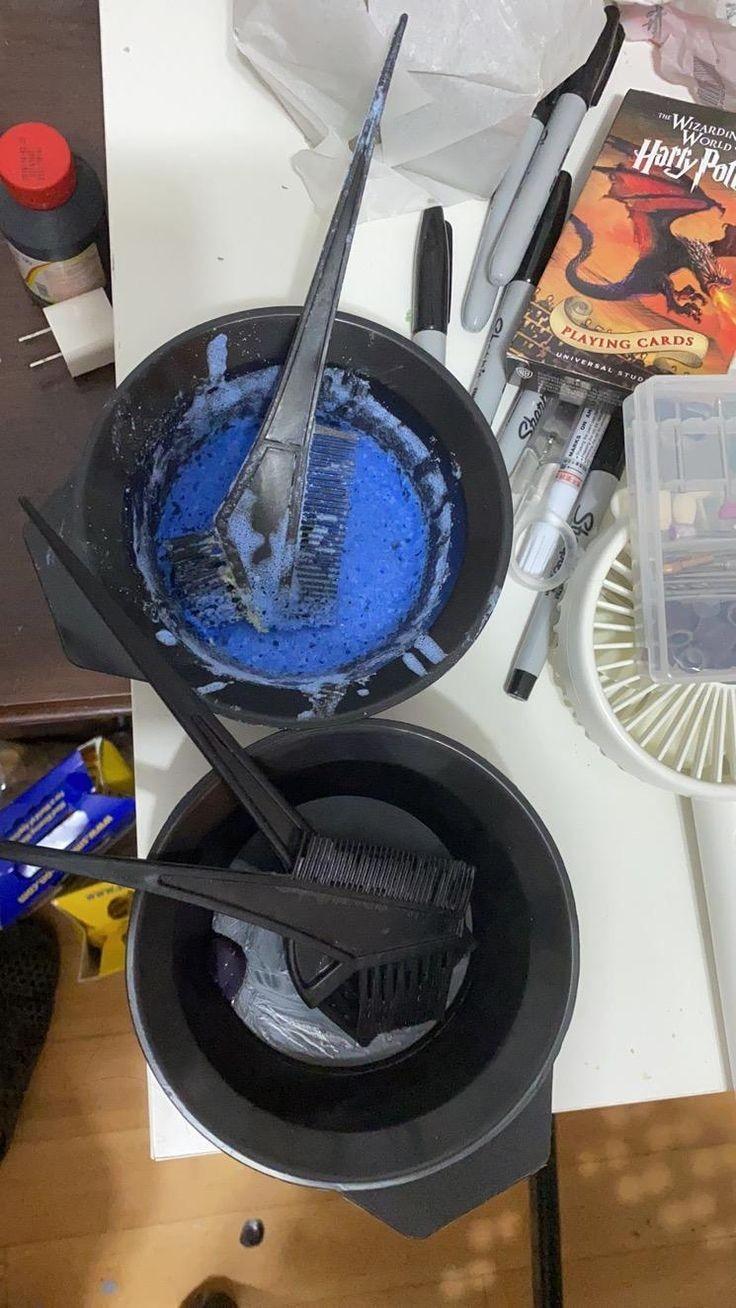Cart (0)
No products in the cart.
We all want to avoid hair thinning as much as we can! This is especially true for those of us who are getting older — nearly everyone experiences hair loss with aging.
When we think about what might be a potential cause of hair loss or hair thinning, hair dye sometimes comes to mind. After all, hair coloring can be very involved in the techniques and the ingredients.
Hair dye contains various chemical agents — and some can weaken our hair strands. Could this mean that hair dye causes thinning or hair loss?

Let’s dive deeper into the answers surrounding hair dye and demystify any questions regarding if it negatively interacts with hair. There are quite a few things we need to take into account!
Not all hair dyes and colors are created equal. Lightening agents such as bleach (used to get those dazzling highlights into dark hair) contain peroxide in high levels, and we will explore how certain chemicals may disrupt the integrity of our hair strands.
There are different kinds of hair loss, too. Hair fall, hair breakage, and the slowing of hair growth are all considered to be hair loss and thinning. What kinds of hair loss, if any, does artificial hair color affect?

Can Hair Dye Damage Your Hair?
If you’re considering coloring your hair to change up your style or cover grey strands, there are various possibilities. The most common types of hair dyes, such as:
The hair color product itself can be damaging to hair. Depending on the strength of the hair dye, the damage may not be as extreme. Your hair goals will determine the type of hair color you choose.

Temporary hair dye is a color that can be applied and washed out completely because it just coats the hair strands instead of penetrating them. Temporary hair dye is intended to wash out after a single shampoo wash. Temporary hair dyes are most commonly used for one-off events like a party or Halloween.

Semi-permanent hair dye will last approximately five to ten shampoo washes. Semi-permanent hair dyes are suitable for people experimenting with hair color or looking to change it up more frequently.

Demi-permanent is intended to last for 30 shampoo washes and is the most common hair dye. With 30 washes, the color will stay true to its intended hue for longer when compared to temporary and semi-permanent dyes.

Permanent hair dye does not wash out, but it will fade over time. The permanent dye will likely last between half to most of the year before needing to be touched up. Hair bleach lands in the permanent color category, as well.
Does Hair Dye Cause Hair Loss?
Unfortunately, hair dye damage is often unavoidable, but the extent of the damage depends on many factors. The natural color of your hair may be prone to more or less hair damage, as will your hair type.
Fine and thin hair can be weakened by the hair coloring process more easily. This is because fine hair strands are often made of less protein, making them more susceptible to breakage.

The greater distance between your natural hair shade and the desired look also increases the extent of the damage that hair dye can cause. Going from dark hair to a lighter shade will require hydrogen peroxide.
Hair stylists will use hydrogen peroxide as a means to lighten the hair in a bleaching method. Once the hair is lightened, hair color can be applied to get the shade you have in mind.

Bleach and lighteners damage the cuticle of the hair and penetrate the hair shaft to impact the bonds inside. Overuse of hair bleach can weaken the hair, leading to damage, breakage, and thinning.
Hair dyes can cause hair loss or thinning, but not in the ways you might expect. Coloring our hair can lead to hair breakage but not the slowing or stopping of hair growth at the follicle.

Side Effects of Hair Dye
Hair dye is an appealing and easy way to change your hair color or cover grey hair. But with all things hair, it’s important to consider any potential side effects and how your hair will handle certain products.

If you’re thinking about making a trip to the salon to change your hair color, it’s important to know the state of your hair. Adding hair dye into the equation can change the structure and health of your hair strands.

Hair dye will damage the lipids and proteins of the hair strands, which are an important part of the health quality of hair. With the change in hair structure, the strands will become more prone to breakage, making hair more susceptible to thinning and loss.
Even opting for a natural option like henna can damage strands. With all of these things in mind, you may wonder if there are any possibilities for hair dye that may not cause as much damage.

How Do I Safely Dye My Hair?
There are a few ways to start your hair color journey on the right foot to promote hair health. While the chemicals in hair dyes can cause damage and hair thinning, it’s all in the technique.
The best way to get started with dyeing your hair is to go to a licensed cosmetologist at a salon, preferably a stylist who focuses on color. A licensed hair stylist will have access to many products that the general public can’t use.

They’re also knowledgeable about achieving the desired hair color and can inform you of the necessary steps. They can adapt their approach to dyeing your hair if you have any special hair needs. Your stylist can also tell you the best ways to take care of your hair after the process.
Hair color is widely available in grocery stores and beauty supply stores. If store-bought hair dye is the road you take, follow the directions and practice a few safety tips.

Follow instructions carefully.
Don’t leave the hair dye in longer than what is called for. You should also not mix dye products but stick to one specific brand and color. Rinse your hair and scalp thoroughly when you’re done, making sure to avoid any water or dye from running down your face.
Don’t forget to wear gloves — hair dye will stain anything it comes into contact with that is porous. If you notice any changes in the integrity of your hair that may point to damage, such as a gummy texture, more hair fall, or split ends, it’s time to take a step back from the hair dye.
Deep conditioning is very important to support your hair’s health after dyeing. Try a deep conditioning butter like Better Not Younger’s Hair Redemption Restorative Butter Masque.
The Best Color-Safe Hair Products
Maintaining your new hair color is important; after all, you still need to wash your hair! You'll want to use color-safe products when jumping into your hair care routine after the salon trip.
When considering color-safe hair care, it's also important that you find products suited for you. Aging hair needs special considerations due to its predisposition for breakage; sometimes, hair dye can add to that concern.

For hair that could benefit from volumizing, like thinning hair, our Wake Up Call Volumizing Shampoo and Wake Up Call Volumizing Conditioner are color-safe and give your hair new life. It adds the appearance of volume, strengthens hair and it has been clinically proven to reduce breakage by up to 95%.
This shampoo and conditioner combo makes a great addition to your hair care routine after an afternoon in your stylist’s chair.

For curly hair needing a color-safe option, our Bounce Back Super Moisturizing Shampoo for Curly Hair and Bounce Back Super Moisturizing Conditioner for Curly Hair are for you. Bounce Back repairs, detangles, and defines curls, all while calming any potential breakage. The curl collection can give you up to 24 hours of definition and frizz control.

For styling your newly dyed hair, our No Remorse Heat Protection & Taming Spray is a moisturizing protectant that will block up to 450 degrees of heat. Heat damage can be lessened by using a heat protectant spray each time you curl hair (or use a straightener, for that matter).